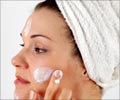- Food and Diet - (http://www.hsph.harvard.edu/obesity-prevention-source/obesity-causes/diet-and-weight/)
- Warning: Avoid these foods containing gluten if you have celiac - (http://www.the-gluten-free-chef.com/foods-containing-gluten.html)
- Role of foods in irregular aggravation of skin lesions in children with atopic dermatitis - (http://www.ncbi.nlm.nih.gov/pubmed/18705827/)
- Human skin condition and its associations with nutrient concentrations in serum and diet - (http://ajcn.nutrition.org/content/77/2/348.long)
About
"Good nutrition is a fundamental building block of healthy skin," says Leslie Baumann, a Miami Beach dermatologist. And rightly so!
The condition of the skin depends on different processes like sebum formation, hydration, and pH of the skin. Hydration is important for a soft and smooth skin. Sebum secreted by the sebaceous glands and the fat layer beneath the skin help maintain hydration of the skin by reducing fluid loss through the epidermis. Again, the fat layer and amino acids help keep the skin acidic (low pH) to protect the skin from pathogens.
Factors like aging, exposure to sunlight and chemicals and mechanical damage influence skin condition. So does diet, and many skin problems may have underlying dietary causes.
For example, an Australian study on the role of food in skin aging found that ‘full-fat milk, red meat (especially processed meat), potatoes, soft drinks/ cordials and cakes/ pastries were associated with extensive skin wrinkling. Foods high in saturated fat, and sugar products too may contribute to skin wrinkling and photoaging. In contrast, foods such as tea, apples, onions, garlic and eggplant appear to have protective effects against oxidative stress of the skin because of their phenolic content.
The researchers also found that fish is correlated with less skin wrinkling, but there is a catch. The scientists feel if the fish is taken with salad or cooked vegetables, then it may be the antioxidants in the plant foods which are offering protection. However, fish itself can also contain a significant amount of antioxidants, vitamin E, and fish sterols, which may influence skin biology.
Acne, another common skin disorder, forms as a result of over-activity of sebaceous glands at the base of hair follicles. Acne can be inflammatory or non-inflammatory. The Western diet (low ratio of omega-3 to omega-6 fatty acids and high in saturated fats) is believed to be the culprit in case of acne. Studies too indicated increased consumption of soda, beef, dairy products, and processed foods to be the prime cause of acne.
Surprisingly, milk too was found to increase acne risk. Two large studies revealed that teenagers are likely to experience severe acne if they consumed two or more than two servings of milk per day, when compared with teenagers who consumed one or less than one serving of milk per week. The fat content of milk was not the determining factor for acne risk, the researchers hypothesized; rather the hormones found in milk may be the reason. Components of milk, other than the fats, have insulin-stimulating abilities. Insulin drives insulin-like growth factor 1 (IGF-1), which in turn was observed to be directly associated with acne risk.
E. Dorinda Loeffel, MD, however, seems to disagree. ‘Clinical tests have not substantiated any correlation between chocolate, peanut, milk or Coca-Colas consumption and worsening of acne. Special diets for teenagers may cause self-consciousness, needless self denial, and disruption of family eating habits. It now appears that such diets are unnecessary’, says the expert in adolescent dermatology.
In short, no food is bad if taken in moderation. A healthy diet and regular exercise will leave your skin healthy, smooth and glowing, and of course keep your weight under control.












